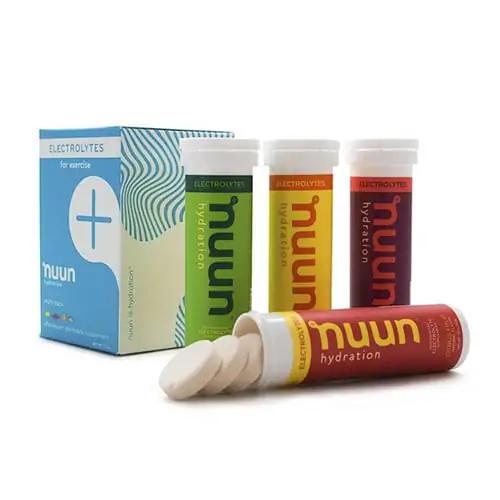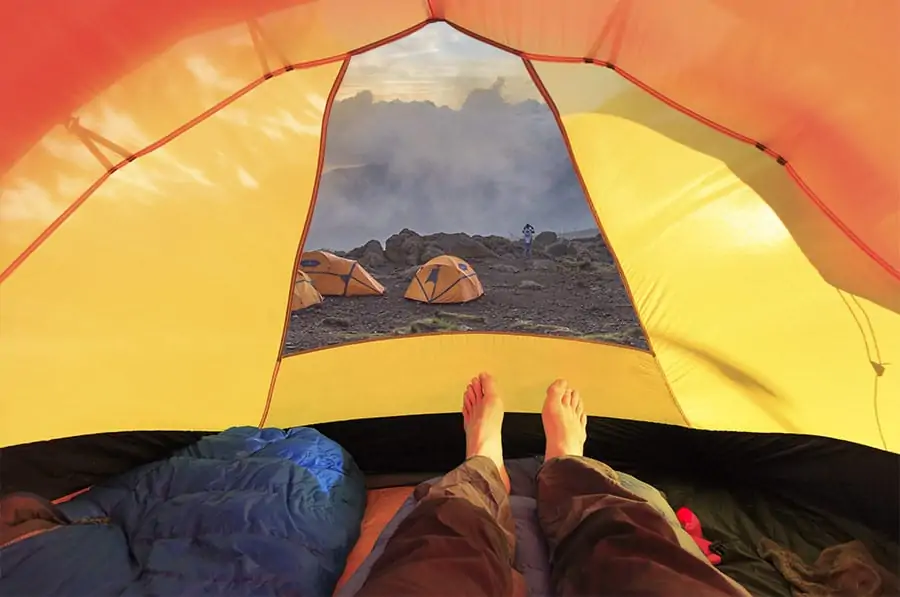
Once you arrive at your campsite after a long day of hiking on Mount Kilimanjaro, your work is done for the day. Our diligent staff takes care of everything from setting up the tents, gathering water, and preparing food. On most days, you will reach camp in the afternoon with many hours to spare until you turn in for the evening.
So what should one do when faced with all this downtime?
Stay Warm
It’s pretty normal to be a little sweaty from the day hike. Though you might not feel cold when you get to camp, once your pack is off and you stop moving, you can become chilly fast. It’s important that you don’t stress your body unnecessarily. Don’t use precious energy to fight the cold when you can simply dress warmer; that energy is better served to help you acclimatize and recover.
If your clothing is wet and won’t dry in a few minutes, change out of those clothes. Put on a dry shirt, fleece or down pants., warm jacket and hat. And grab your headlamp while you’re at it; you’ll need it soon. We recommend doing this when you arrive at camp rather than waiting for the temperature to drop to do so. Never sit in your tent or stand outside and shiver.
Refuel & Replenish
Climbing Kilimanjaro burns a lot of calories. That means you need to eat and drink enough every day to sustain your body.
In addition to the three main meals, we also provide an assortment of snacks.
Each campsite has a communal dining tent complete with a table, chairs, and kitchenware. The waiter will lay out various snacks here including popcorn, fruit, cookies, Duros, chips, and peanuts. Keep eating throughout the day, even if you don’t feel hungry, as altitude can make some people lose their appetite.
Drinking water, tea, coffee and hot chocolate are served in the tent too. Hydration is key to prevent altitude sickness. 4-5 liters per day is recommended.
You may also want to take electrolytes. Fill your Nalgene with water and mix in Nuun tablets or Gatorade powder (not provided).
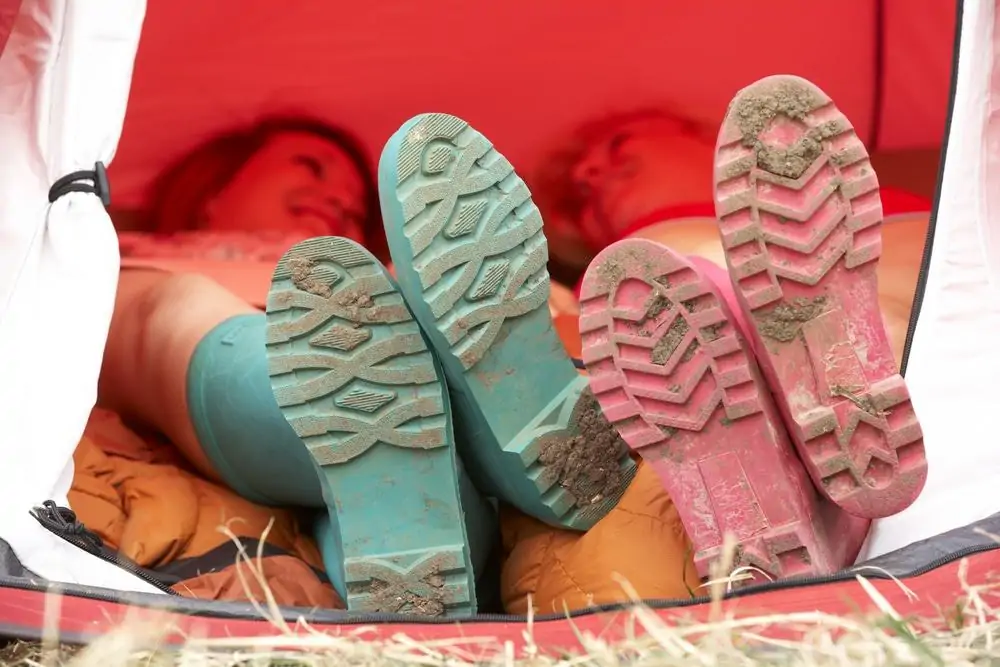
Get Some Rest
Hiking is a physical activity, which means you it is imperative that you get as much rest as possible. Even people who exercise regularly and trained sufficiently will get some soreness, aches and pains from the exertion of the day’s hike. Resting gives your body a chance to recover as well as acclimatize to the elevation, particularly on days where the gain was significant.
Even if you don’t feel tired, it’s a good idea to lay down in a horizontal position for a while to take the load off the body once you get to camp.
Another thing you can do is to put your feet up on your duffel or daypack. Elevating them will help reduce the swelling that occurs from being on your feet for an extended period of time.
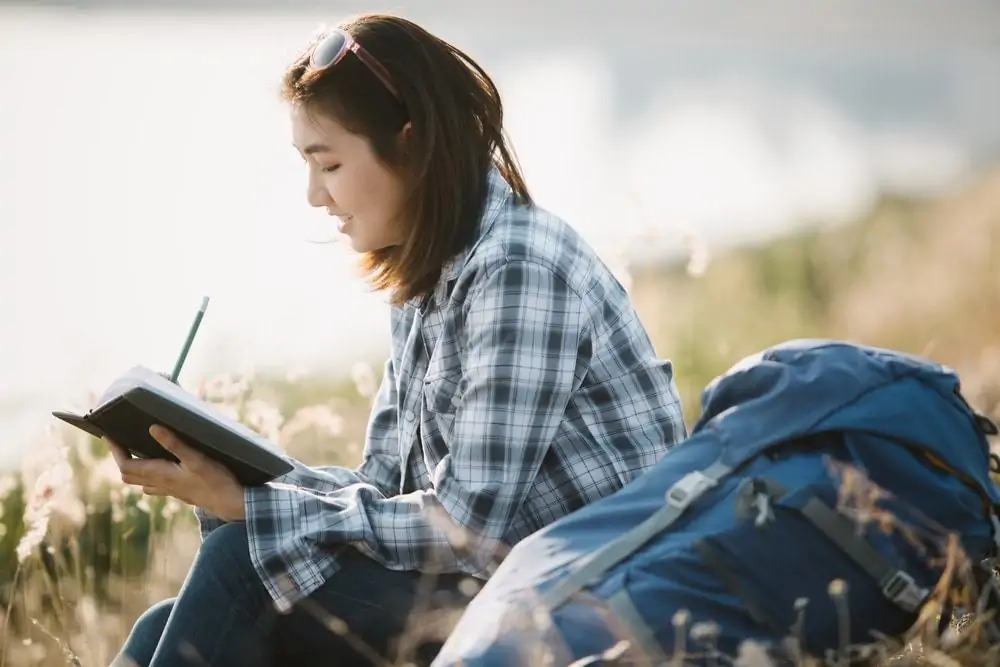
Create or Relax
If you don’t want to rest, you can use the downtime to walk around near the campsite to take photos and videos. This is a good opportunity to set up a time lapse video of a sunset or rolling clouds. You can also create a video blog (vlog) to document your journey. Talk about the day hike, the weather, how you feel, what you saw, what you are looking forward to, and your overall experience.
If you brought a pen and paper, you can write journal entries. Or maybe sketch some scenery.
If you would rather just relax, then read a book or listen to music.
Don’t forget to charge your smart phone, eReader, or camera batteries for the next day with either a power bank or solar charger.
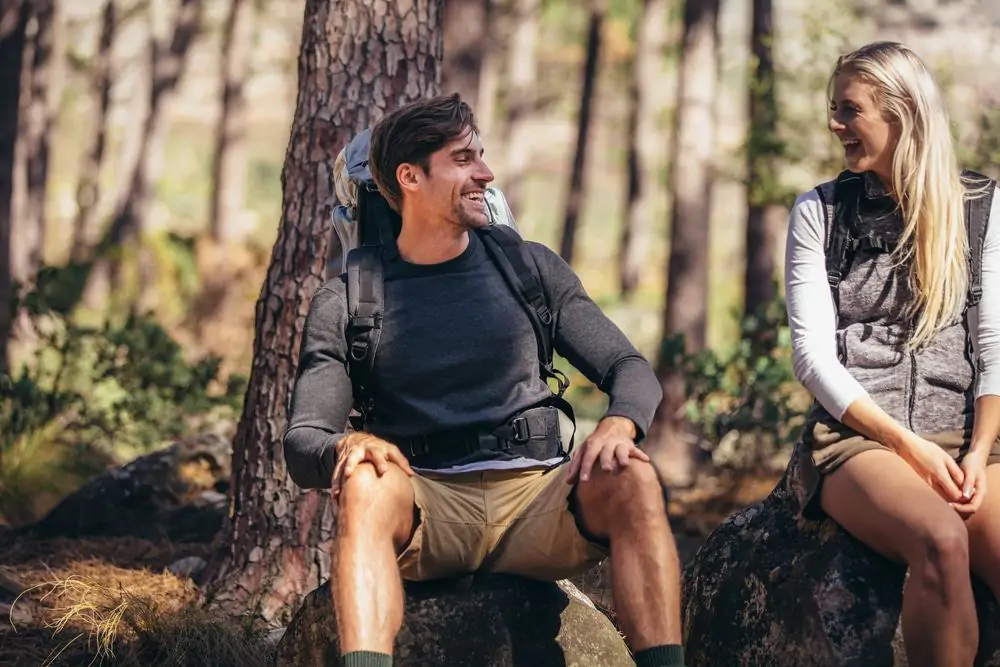
Socialize
At the campsites are where some of the best times are shared with your fellow travelers. People from all walks of life come to Tanzania to climb Kilimanjaro and each has her own story. Use this time to get to know your trekking party. You are all on this journey together. Having a built in support group among your team will make the adventure easier when times get tough. Chances are, you will make lifelong friends with some of the people on your trip. So don’t be hesitant to strike up a conversation – with your group, the crew, and others outside your party.
Clean Up
Practicing proper hygiene is crucial on the mountain. You don’t want to get a bacterial infection which can lead to an early exit from your journey. Water and soap is provided at the campsite. The best thing you can do is to wash your hands every time you use the toilet and before every meal. We provide private toilet tents so you don’t have to use the dirty public “long-drop” toilets.
While you are at it, wash your face to wipe off the dirt and grime that accumulated during the day.
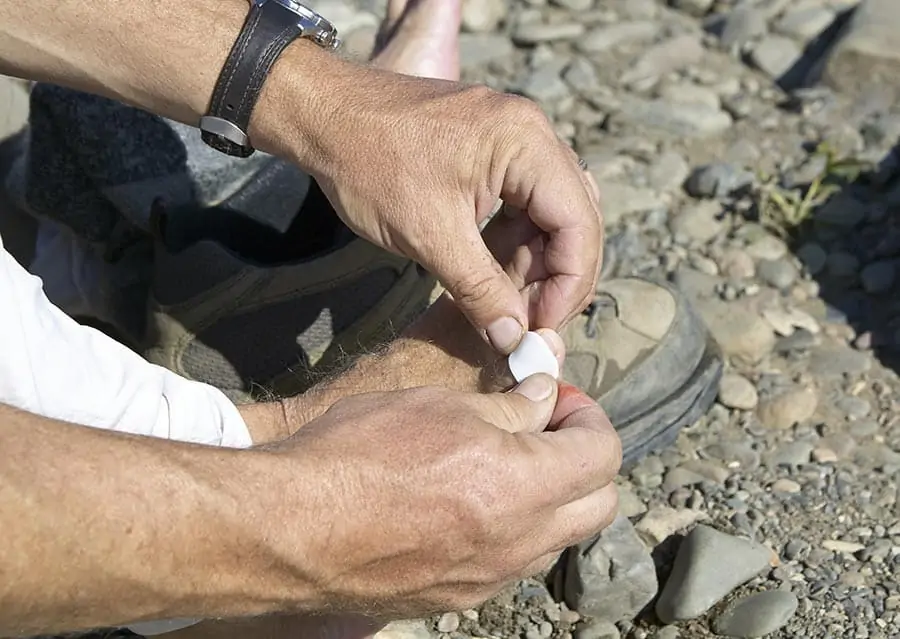
Inspect your feet. If you have any hot spots on your feet or blisters, make sure you tend to them. If you are unsure how to treat them, ask your guide. Blisters should be popped and taped up.
Of course, you want to brush your teeth as normal.
And finally, clean out your day pack of any snack wrappers and other trash. There will be a garbage bag attached to the outside of the mess tent.
There isn’t a big problem with mice on the mountain, but it is a good practice to keep your pack, tent, pockets free from crumbs.
Check Your Health
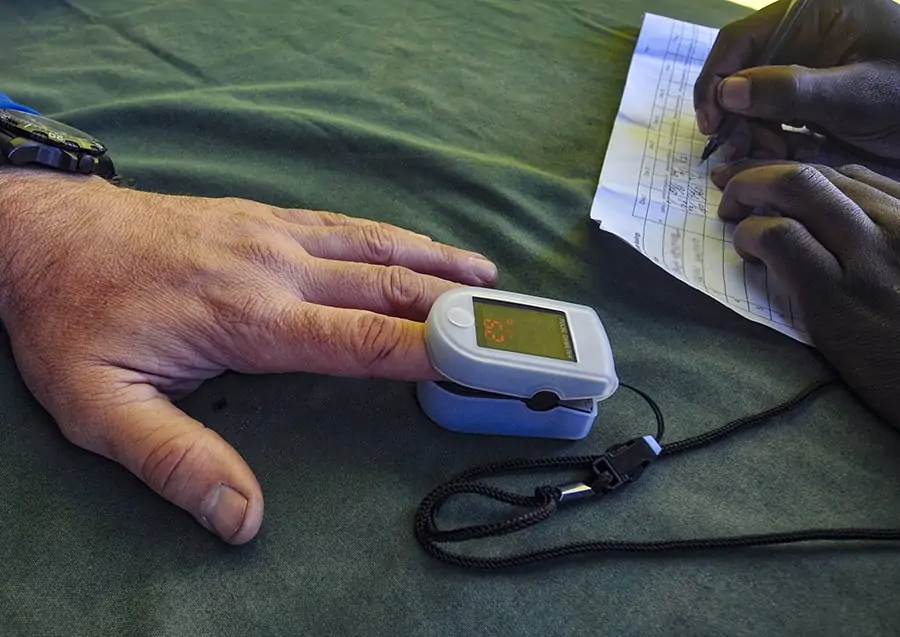
After dinner, the head guide will come in for your evening briefing. During this briefing, he’ll let you know what to expect the next day. This normally includes what the weather may be like, what to wear, how long you’ll hike, and the next camp’s elevation.
In addition to the briefing, you’ll also receive a health check. The guides will check your pulse, heart rate, oxygen saturation and listen to your lungs. They will also ask a series of questions to gauge whether you have symptoms of altitude sickness. Health checks are done twice per day and recorded in order to monitor your well-being throughout the climb.


